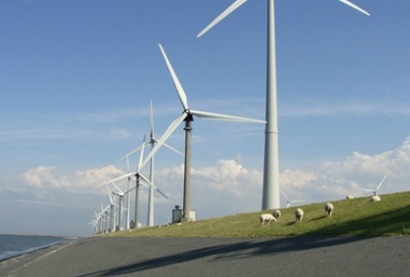
Renewable power generation is expected to continue its rapid growth over the next five years, according to a new report from the International Energy Agency that acknowledges the coming-of-age of the renewable energy sector. The report says that despite economic uncertainties in many countries, global power generation from hydropower, solar, wind and other renewable sources is projected to increase by more than 40% to almost 6 400 terawatt hours (TWh) – or roughly one-and-a-half times current electricity production in the United States.
The study, released today, marks the first time the IEA has devoted a medium-term report to renewable power sources, a recognition of the dynamic and increasing role of renewable energy in the global power mix. The study examines in detail 15 key markets for renewable energy, which currently represent about 80% of renewable generation, while identifying and characterising developments that may emerge in other important markets. It completes a series of IEA medium-term market reports also featuring oil, natural gas and coal. Like the others, it presents a forecast of global developments and detailed country projections over the next five years.
The new study, Medium-Term Renewable Energy Market Report 2012, says that renewable electricity generation should expand by 1 840 TWh between 2011 and 2017, almost 60% above the 1 160 TWh growth registered between 2005 and 2011. Renewable generation will increasingly shift from the OECD to new markets, with non-OECD countries accounting for two-thirds of this growth. Of the 710 GW of new global renewable electricity capacity expected, China accounts for almost 40%. Significant deployment is also expected in the United States, India, Germany and Brazil, among others.
This growth is underpinned by the maturing of a portfolio of renewable energy technologies, in large part due to supportive policy and market frameworks in OECD countries. However, rapidly increasing electricity demand and energy security needs in recent years have been spurring deployment in many emerging markets - both large and small. These new deployment opportunities are creating a virtuous cycle of improved global competition and cost reductions.
"Renewable energy is expanding rapidly as technologies mature, with deployment transitioning from support-driven markets to new and potentially more competitive segments in many countries," IEA Executive Director Maria van der Hoeven said during today's launch. "Given the emergence of a portfolio of renewable sources as a crucial pillar of the global energy mix, market stakeholders need a clear understanding of the major drivers and barriers to renewable deployment. Based on these factors, this report forecasts global renewable development and, in so doing, provides a key benchmark for both public and private decision makers."
The report's release comes amid profound changes and the uncertainties associated with a cautious macroeconomic outlook. First, governments in several key markets are deliberating significant changes to renewable policies and deeper electricity market reforms as renewable deployment scales up. Second, the cost and availability of financing will act as a key variable, with a need for more investment sources and structures. Finally, some parts of the renewable industry are going through a period of dramatic upheaval, with supply chains restructuring and shifting geographically while delivering cost reductions. Ultimately, such a consolidation should lead to a more mature and robust renewable sector.
The report presents detailed forecasts for renewable energy generation and capacity for eight technologies - hydropower, bioenergy for power, onshore wind, offshore wind, solar photovoltaics (PV), concentrating solar power (CSP), geothermal and ocean power. This first edition focuses on renewable energy in the electricity sector, though it also examines solar thermal heating.
Other key findings of the report include:
For additional information:

